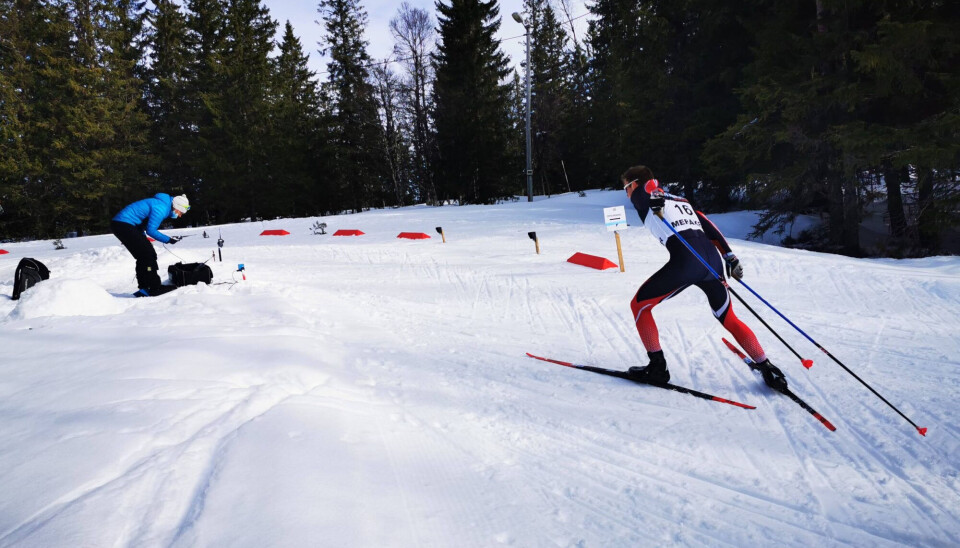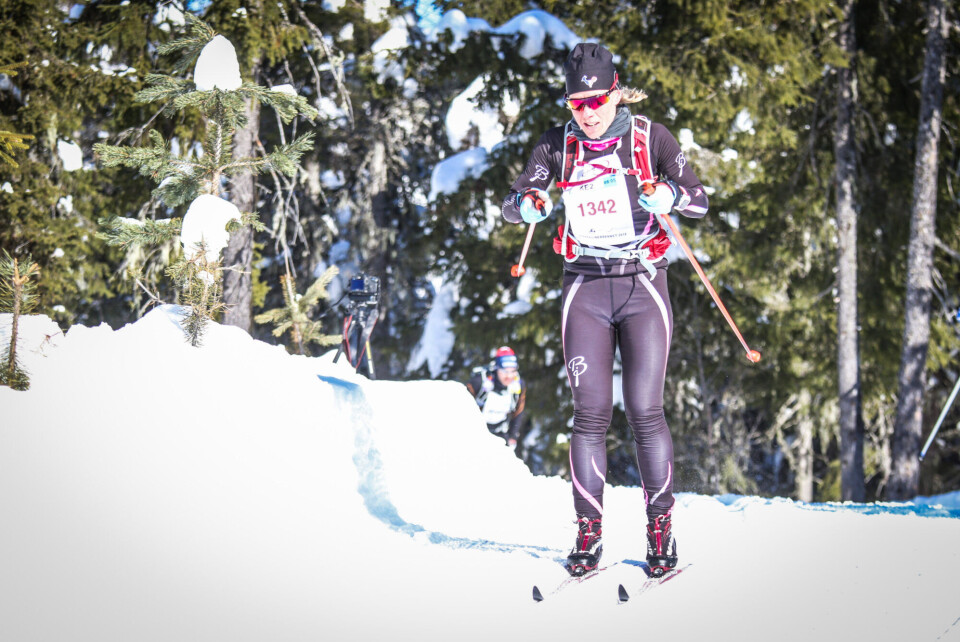THIS ARTICLE/PRESS RELEASE IS PAID FOR AND PRESENTED BY SINTEF - read more

Skiers can gain on their competitors by having a detailed plan of what to do on the uphills
A short sprint over the top of a hill can shave off a few seconds.
Do you like skiing – and especially going fast?
Then you may know how important it is to optimise your power as a cross-country skier. Maybe you compete and have also wondered how you can gain valuable seconds.
A lot depends on technique and physical conditioning, but research also shows that you can profit from being smart in the right places during the race.
“A lot of skiers have gotten advice about the best way to get over hill tops,” Trine Seeberg says.
She is a researcher at SINTEF, and is also a PhD candidate at NTNU’s Centre for Elite Sports Research (SenTIF).
Save time without exerting more effort
It’s easy for coaches and assistants to give advice, but not as easy for the skiers to execute, especially with the taste of blood in their mouth and a sky high pulse.
Seeberg collaborated with other researchers from NTNU and Nord University to conduct a study to help cross-country skiers at all levels so that they can save time without using more effort.
The study clearly shows that skiers can save time – and that it’s easy to make them aware of how to achieve this without requiring too much effort.
“You don’t want to press on the gas too much going up a hill. You should maintain a steady pace. As you reach the top, you accelerate in the right place for four to five cycles to get over the top, and then you need to quickly drop into a tuck position,” Seeberg says.
Research for Olympic gold
The perfect place for that extra bit of effort isn’t where the uphill starts to flatten out. You have to wait until you’ve crested the hill, right before the downhill starts again.
“If you try to accelerate as soon as you reach the top of the hill, it’ll probably cost you too much energy,” Seeberg says.
By waiting until you are almost over the top, you can gain several seconds on competitors on the subsequent downhill.
“If you manage to hold back going up the hills, it can pay to exert a little more effort over the brow of the hill,” Seeberg says.
Elite skiers are already familiar with this concept. Norwegian broadcasting corporation NRK’s Vitenskapen bak medaljen (The science behind the medal) miniseries, for example, tells the story of how Didrik Tønseth worked with top sports researchers to help him achieve the last step towards top-level performance.
The researchers wondered whether this knowledge could also be applied at the level below the very best – and whether it could be learned in a relatively short time.

Theory and practice
To that end, they carried out a study in the cross-country village of Meråker, which could provide them with high-level skiers who were students from the town’s specialised high school ski programme and sports students at Nord University.
The approximately 30 skiers completed a test run over 10 kilometres.
The participants were equipped with wearable sensors, GNSS (Global Navigation Satellite System), motion sensors, and heart rate monitors. The researchers measured their precise speeds at certain points on the downhill slopes. The skiers were then divided into two groups.
“In the evening after the race, we had a 45-minute meeting with one group. We looked at the videos of them one by one, and showed them our data from the sensors. We pointed out things they could improve on,” Seeberg says.
This group put theory into practice out on the trail with the researchers the following day.
“They were able to try out different strategies for how to maximise their speed before they went into a tuck on the downhills. After each trial, they were told what speed they achieved, so they could see what worked best,” she says.
The other group received no training, but had a training session of similar intensity. On day three, everyone ran another race over the same 10 kilometres.
Clear improvement
“We saw a significant change with the help of the training sessions, both in the skiers’ speed at the top of the hill, and the time they spent on the entire downhill,” Seeberg says.
The skiers implemented the strategy not only on the two hills where they had specifically trained for it, but also on other parts of the trail with a similar profile.
In the video below, skier Geir Kristian Hoås demonstrates how it should be done.
“The skiers were able to generalise this knowledge and use it elsewhere,” Seeberg says.
The researchers were able to document that the selected skiers increased their speed on the downhills and between the hills, but showed no change on the uphills. So they lost nothing by reserving some strength on the uphills before increasing their speed over the tops of the hills.
The figures also suggest a significant improvement in finishing time for the skiers who received special training tips between races, but the correlation was not strong enough to satisfy the strict research requirements for drawing conclusions.
“That’s partly due to the fact that there weren’t that many participants and because of the changing snow conditions over the trial period,” Seeberg says.

Not all hilltops are suitable
Seeberg applies her own study results when she puts on her skis.
“I’ve benefited from the research when I race for fun. It helps just to be aware of the results,” she says.
You might want to think about them too if you want to improve as well. Just remember that not all hilltops are equally suitable for this strategy.
“This strategy won’t work on all slopes. If it’s too steep at the top, and you just immediately drop into the descent, you won’t be able to generate enough speed for it to be of any use,” Seeberg says. “The same is true if the downhill is so steep that you have to brake and slow yourself down. Then there’s not much point in having lots of speed at the top."
Reference:
Seeberg et al. Performance Effects of Video- and Sensor-Based Feedback for Implementing a Terrain-Specific Micropacing Strategy in Cross-Country Skiing, International Journal of Sports Physiology and Performance, vol. 17, 2022.
See more content from SINTEF:
-
New study: Even brand-new apartments in cities can have poor indoor air quality
-
Fresh hope for patients with chronic inflammatory bowel disease
-
Testing a giant ship: May take five kilometres to stop
-
A robot is helping researchers hunt for the best cancer warriors
-
Locomotives that run on diesel can be electrified
-
Where kelp is being turned into lab-grown meat





































